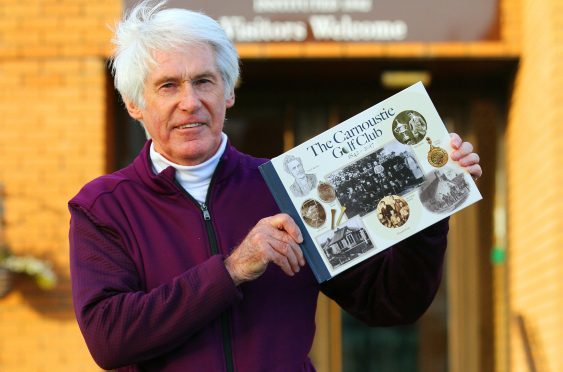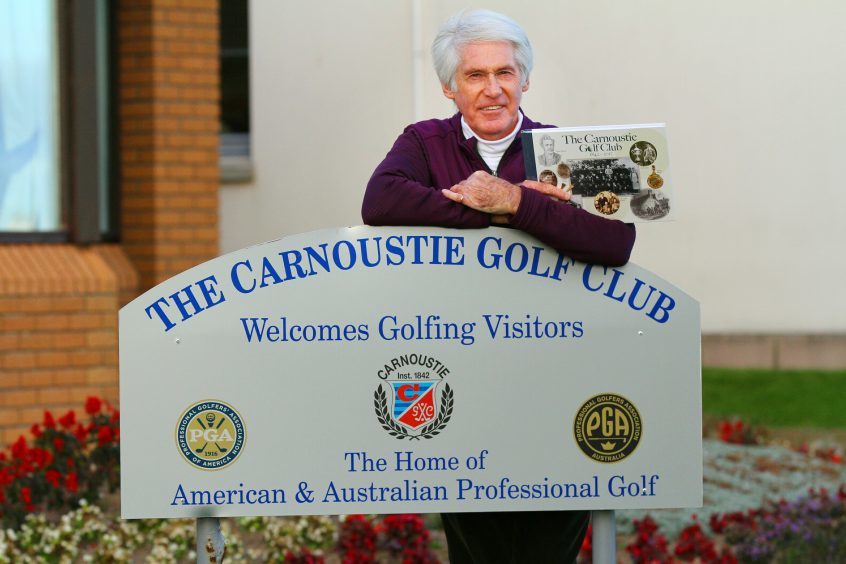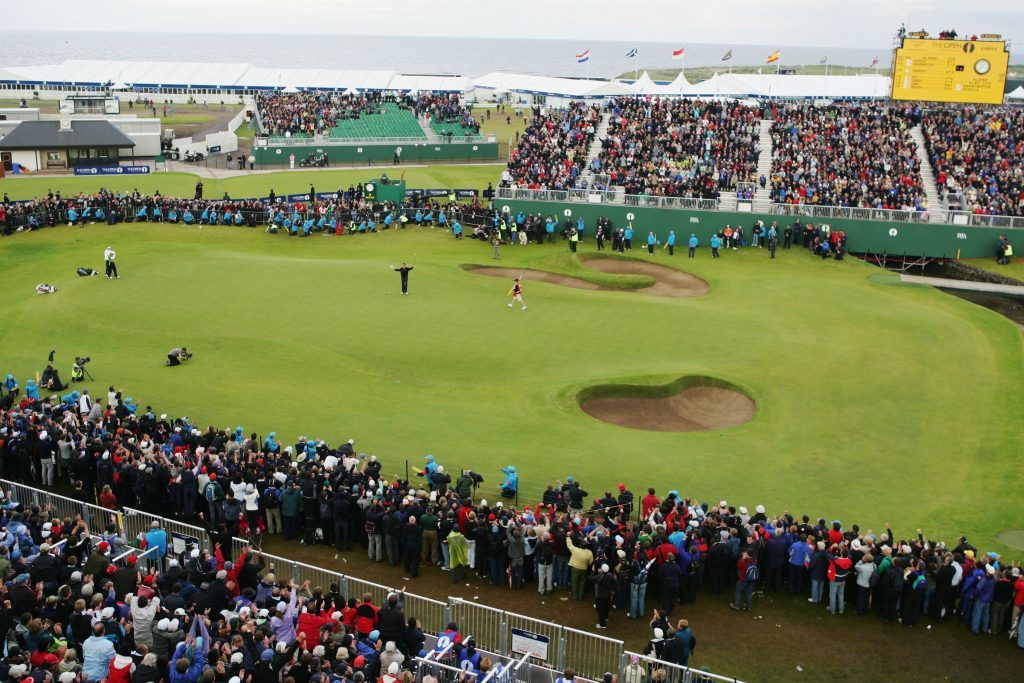Former Hearts striker turned landscape photographer Donald Ford tells Michael Alexander how his new book marking the 175th anniversary of Carnoustie Golf Club captures a “remarkable” history that in many ways eclipses St Andrews.
Like so many golfing pilgrims from around the globe, photographer turned author Donald Ford feels a shiver run up his spine whenever he turns up the hill out of Guardbridge and sees the iconic spires of St Andrews – and the Home of Golf – for the first time.
But controversially, the former Hearts and Scotland footballer believes that Carnoustie golf links, while missing the famous skyline, wins hands-down when it comes to the “phenomenon, disaster, brilliance and tragedy” of golf.
Donald, 73, who scored 188 goals for Hearts during the 1960s and 1970s, produced a book called the The Carnoustie Story 11 years ago.
He fell in love with the Angus town during family holidays there as a child and, after a career in football and accountancy, which saw him turn his hand to full time landscape photography in 1990, he and his wife Carol bought a beachfront house there in 2005 and have lived there ever since.
Now the self-taught photographer, who specialises in landscape and golf course panoramas, has written a 160-page book called The Carnoustie Golf Club 1842 – 2017 which marks the 175th anniversary of the famous Carnoustie Golf Club.
It came about after Donald was approached in July 2015 by the then Carnoustie captain Kenny Fraser who was instrumental in suggesting that the club do something special to mark the 175th anniversary year.
What followed was 18 months of painstaking research into the history of the club using the minutes housed within the Dundee University archives.
And Donald, a six-handicap golfer who will be captain of the neighbouring Dalhousie Golf Club when it celebrates its 150th anniversary next year, is “incredibly proud” of the resulting book which is now for sale.
“Basically we camped out in Dundee University for 18 months,” explains Donald over a coffee within Carnoustie Golf Club’s modern club house building.
“We started at the start – which sounds a bit naïve – but it was only when we found the very first minute book from 1842 that a cloud hanging over the origins of the club could be removed.
“Because while golf had been played over the links at Carnoustie since the 16th century – as mentioned in the Registrum de Panmure of 1527 – there was then a gap of 300 years with not a scrap of anything.
“There was a Barry golf club here in 1835 which is never referred to in any of the archival stuff. It wasn’t the Panmure Club that’s there now. It was just a collection of guys. Some came up from Edinburgh. A chap called Robert Chambers had laid out the course and he brought some of his guys up. Visitors used to stay in but and bens on the links and play golf.
“It’s probable that those Barry members became the first Carnoustie Golf Club.”
With 175 years of minutes to read, Donald said it was a case of “what to leave out rather than what to put in”.
“There were so many fantastic stories!” he adds.
However, he continues to be amazed that some of the stories hadn’t been written about before.
“Between the 1890s and 1940, literally hundreds of Carnoustie-based golf professionals and club makers travelled to North America and beyond, making their name and winning trophies including a US Open along the way,” says Donald.
“But the ones who went around the world didn’t just go to win tournaments. They went to teach golf in the other countries and take the golf over there.”
It was Herb Warren Wind, the renowned American golf writer, who penned the line: “St Andrews may be the home of golf, but Carnoustie is the home of American and Australian professional golf”.
Given that 15 of the 35 “charter members” of the PGA of America hailed from the town and the Australian equivalent had a similar influence, Carnoustie’s pioneers certainly deserve recognition.
They were led across the Atlantic by the Smith family, with Willie the first to make his mark as a player in the States by winning the 1899 US Open, which one of his brothers, Alex, then claimed twice – in 1906 and 1910. On the second of those occasions, he beat another of the golfing siblings, Macdonald, in a play-off.
“Carnoustie can’t compete with the legendary status of St Andrews as the home of Golf and the people that created it, and it doesn’t have the iconic spires and buildings as a backdrop” adds Donald.
“But what Carnoustie does have is the quality of the links.
“If you were able to ask 100 of the top professional golfers just now to name the most difficult links in the UK, I would guess at least 50 would say Carnoustie and the rest would be split between Birkdale, maybe Muirfield, maybe Lytham and maybe Royal St George.
“It’s a much more exciting story in a different way to the St Andrews thing. I think it’s The Open that’s raised the profile of Carnoustie with all the phenomenon, disaster, brilliance and tragedy.”
It’s a reputation that many will hope is honed further when The Open returns to Carnoustie in 2018.
*The Carnoustie Golf Club 1842 – 2017 can be purchased for £25 through Carnoustie Golf Club.












